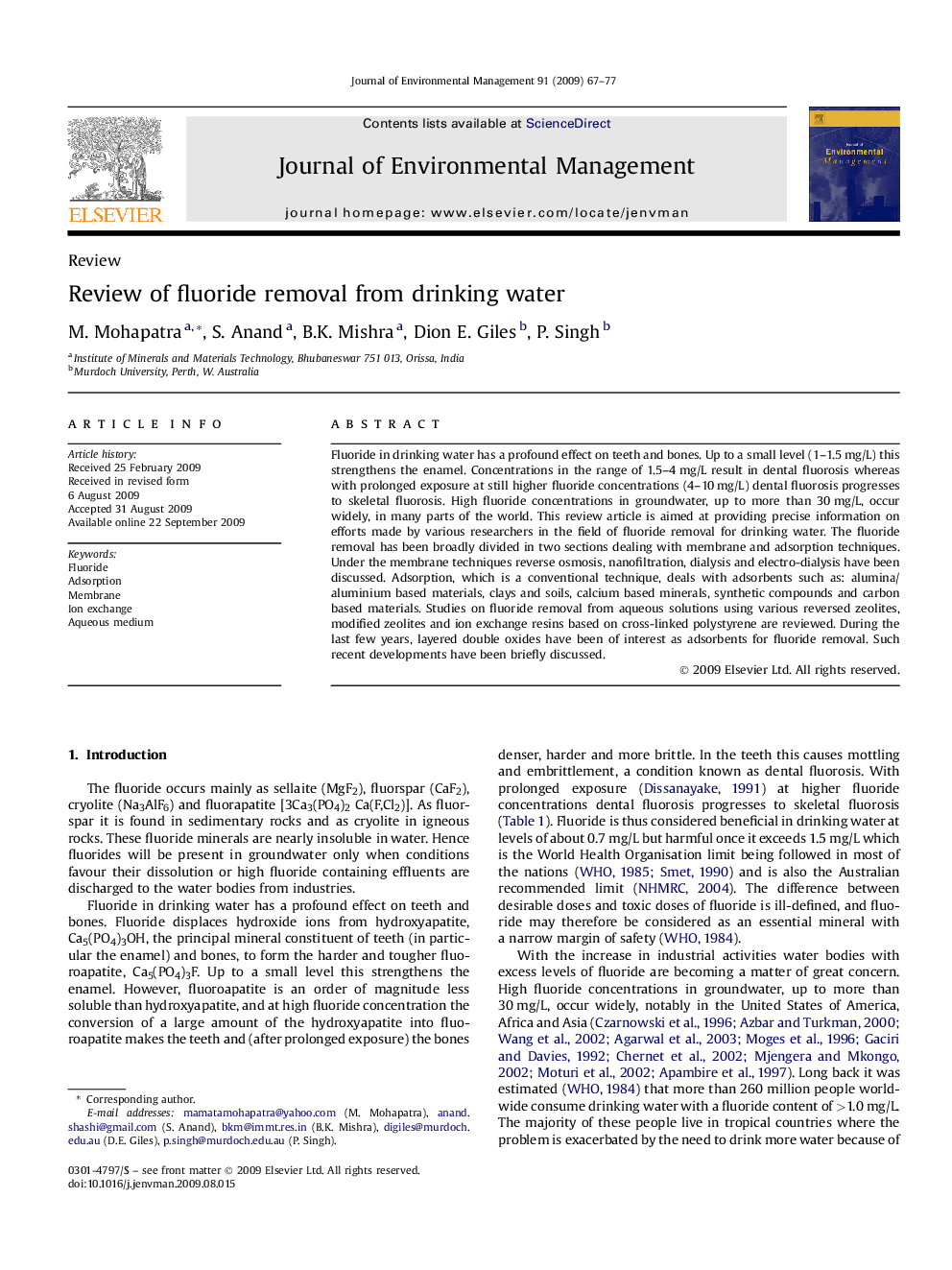| Article ID | Journal | Published Year | Pages | File Type |
|---|---|---|---|---|
| 1057243 | Journal of Environmental Management | 2009 | 11 Pages |
Fluoride in drinking water has a profound effect on teeth and bones. Up to a small level (1–1.5 mg/L) this strengthens the enamel. Concentrations in the range of 1.5–4 mg/L result in dental fluorosis whereas with prolonged exposure at still higher fluoride concentrations (4–10 mg/L) dental fluorosis progresses to skeletal fluorosis. High fluoride concentrations in groundwater, up to more than 30 mg/L, occur widely, in many parts of the world. This review article is aimed at providing precise information on efforts made by various researchers in the field of fluoride removal for drinking water. The fluoride removal has been broadly divided in two sections dealing with membrane and adsorption techniques. Under the membrane techniques reverse osmosis, nanofiltration, dialysis and electro-dialysis have been discussed. Adsorption, which is a conventional technique, deals with adsorbents such as: alumina/aluminium based materials, clays and soils, calcium based minerals, synthetic compounds and carbon based materials. Studies on fluoride removal from aqueous solutions using various reversed zeolites, modified zeolites and ion exchange resins based on cross-linked polystyrene are reviewed. During the last few years, layered double oxides have been of interest as adsorbents for fluoride removal. Such recent developments have been briefly discussed.
